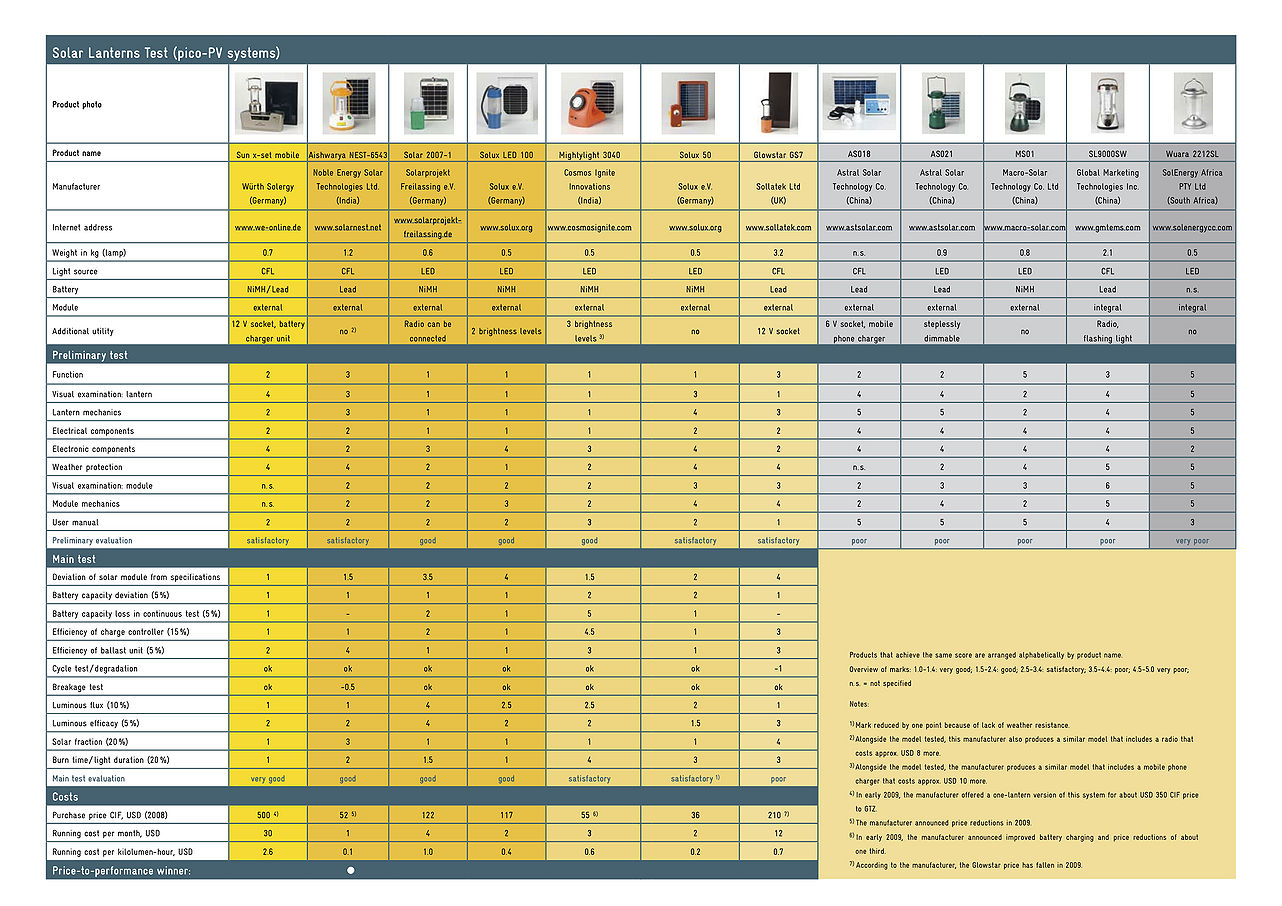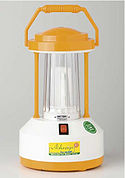Knowledge fuels change - Support energypedia!
For over 10 years, energypedia has been connecting energy experts around the world — helping them share knowledge, learn from each other, and accelerate the global energy transition.
Today, we ask for your support to keep this platform free and accessible to all.
Even a small contribution makes a big difference! If just 10–20% of our 60,000+ monthly visitors donated the equivalent of a cup of coffee — €5 — Energypedia would be fully funded for a whole year.
Is the knowledge you’ve gained through Energypedia this year worth €5 or more?
Your donation keeps the platform running, helps us create new knowledge products, and contributes directly to achieving SDG 7.
Thank you for your support, your donation, big or small, truly matters!
Difference between revisions of "Solar Laterns Test"
***** (***** | *****) |
***** (***** | *****) |
||
| Line 26: | Line 26: | ||
<br> | <br> | ||
| − | The following table shows the testing criteria and evaluation of types of lanterns. | + | The following table shows the [[Pico_PV_test|testing criteria]] and evaluation of types of lanterns. |
[[Image:Solar lanterns testresults.jpg|1283x906px|Solar lanterns testresults.jpg]][[:file:Solar Lanterns Testresults.pdf|Solar_Lanterns_Testresults.pdf]] | [[Image:Solar lanterns testresults.jpg|1283x906px|Solar lanterns testresults.jpg]][[:file:Solar Lanterns Testresults.pdf|Solar_Lanterns_Testresults.pdf]] | ||
Revision as of 17:52, 28 January 2011
Experience in development cooperation shows that one thing must be avoided at the outset: that users of cheap and inadequate devices should become so disillusioned that the entire technology is discredited. Therefore, GIZ has developed a methodology in cooperation with Fraunhofer Institute for Solar Energy Systems (ISE) Freiburg, Germany.
Solar lanterns could replace environmentally damaging kerosene lamps in many developing countries and supply high quality light to a large proportion of poor households. To meet this end, the products must be well-made and priced within the reach of the poorest. The lab test implemented by GIZ and Fraunhofer ISE in 2008 and 2009 shows that there are too few solar lanterns that meet both criteria.
The quality of solar lanterns on the market is mixed, and prices are still too high for them to sell in great numbers in view of the low saving rates of poor households. However, we expect prices to drop below 50% of 2008 values over the next few years. As they offer higher quality lighting, better handling, environmental advantages and sometimes radio or mobile phone charging, massive market growth can be expected in the near future. In light of the mixed test results, informing potential consumers about lantern quality will be of great importance for a healthy market development.
The main results of the test were as follows:
1. Five lanterns failed even test level one and six lanterns passed level two. Only three of those are affordable for the target households in developing countries.
2. The quality of solar lanterns on the market is mixed, and prices are still too high for them to sell in great numbers in view of the low saving rates of poor households.
3. We expect prices to drop below 50% of 2008 values over the next few years, which will make solar lanterns clearly more economic than kerosene lamps. As they offer higher quality lighting, better handling, environmental advantages and sometimes radio or mobile phone charging, massive market growth can be expected in the near future.
4. In light of the mixed test results, informing potential consumers about lantern quality will be of great importance for a healthy market development.
In the initial Test Level 1, ISE examined all twelve systems for quality of workmanship. Five lamps did not pass test level one. In general the tests show that a majority of the available lights are not suitable for “Off-Grid Lighting” ion developing countries due to their very poor quality, which would lead to very short lifetimes and bad lighting service for poor rural customers.
The main quality issues determined were:
- Poor mechanical design and workmanship
- Missing over-current protection of the LED
- Poor electrical design
- Insufficient light output
- Bad quality of LEDs: rapid degradation of light output
- Solar panels and batteries did not show their nominal values or were sized too small
- Defective protection of battery
- Defective ballast for LEDs or CFLs[1]
The following table shows the testing criteria and evaluation of types of lanterns.
 Solar_Lanterns_Testresults.pdf
Solar_Lanterns_Testresults.pdf
Taking the different evaluations into consideratin, the winner of the technical test was the sun x-set mobile. Even if the two lanterns do not show the best workmanship, the system functions with the largest and most powerful module by fa
r and with an outstandingly good and versatile charging station. The extremely high purchase price and consequently huge operating costs making any argument that the target group should adopt this new lighting system untenable.
In terms of price-to-performane, the Aishwarya lamp NEST-6543 of the Indian manufacturer Noble Energy was the winner in this test:
Of the systems rated ‘good’ in technical terms, the Indian Aishwarya stands out because of its especially favourable price. It failed to attract a better technical evaluation only because of its faulty ballast and minor issues in workmanship. The Aishwarya is therefore the clear winner in the price-to-performance comparison.
A more detailed summary about the test criteria during the preliminary and main test you find here.
For further reading you can download the full report here:
File:Gtz solar lanterns test.pdf
- ↑ GTZ; iiDevelopment. 2010.A Primer on Pico PV.Early findings on an emerging low-cost energy technology for developing countries.




















